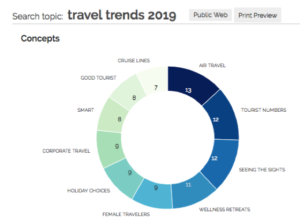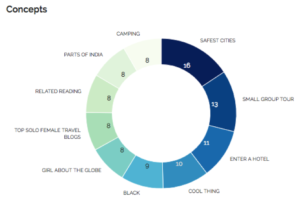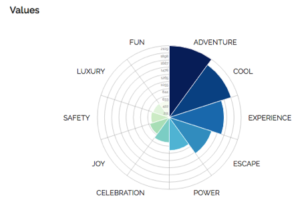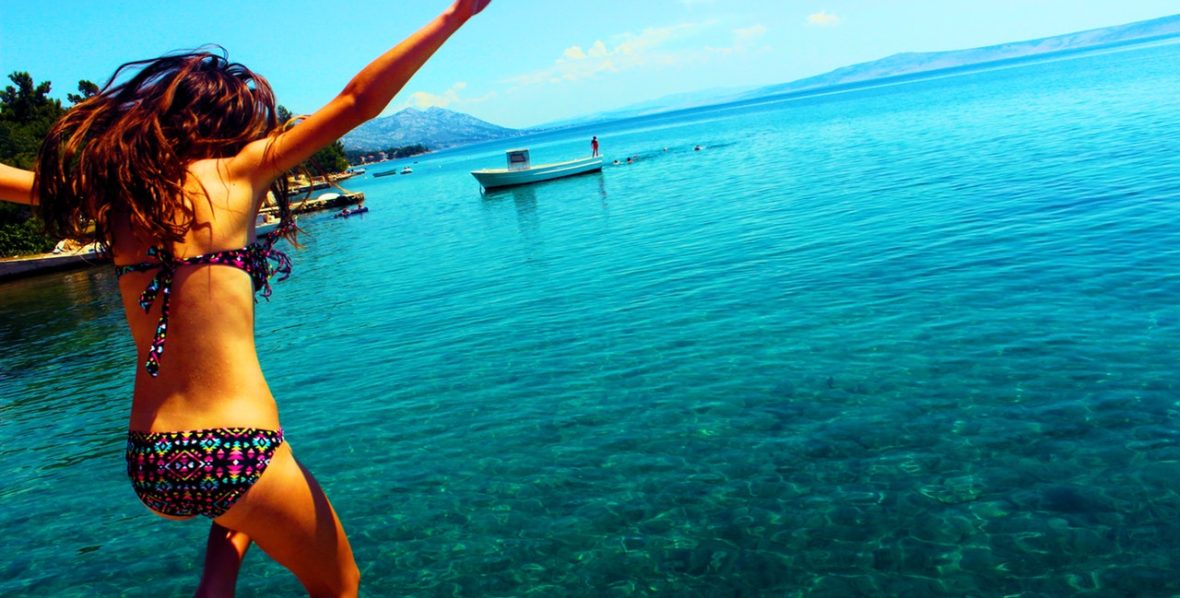By Natalie Haynes, Contributor
You run an analysis, get results, and now what? What are your next steps based on what you’re hearing or reading?
Any tool is a starting point, and often, the next step is to push the analysis further. Ask more questions to really understand the moving parts underlying the trends.
As an example, let’s place a finger on the pulse of travel trends for 2019.
A Metametrix search on “travel trends 2019” shows several current trends that stand out.

Wellness Retreats and Female Travelers are in the top five concepts found for 2019.
A deeper look into articles related to female travelers, like this one from Travel Tripper, shows that traveling alone is a strong trend, and that trend has been growing steadily since 2013. “Between 2016 and 2017, searches for the term “solo female travel” increased by 50%.” Women are also more inclined to seek out wellness retreats compared to men.
REI Adventures and Intrepid Adventures report increases in bookings by women traveling solo, with rapid increases in the past few years, including everything from Grand Canyon expeditions to climbing Mt. Kilimanjaro.
And looking into what’s important to female travelers, we can see that they want Adventure (the top value, shown below), but they also highly value Safety. Safest City is the top concept identified by Metametrix when searching on “solo female travel”. Additionally, Small Group Tours is the next highest concept. Many women want to travel alone, but in a group. Lentine Alexis is a tour guide in Sonoma, California, and she notes:
“When women travel together, they tend to be a more cohesive and closer-knit group than mixed groups… They support each other and encourage each other to try something that they may have never done before.”


So what next?
Let’s consider one more trend that stands out. From the initial Metametrix search above, Seeing the Sites was a top concept, which led to a Forbes article about travel trends in 2019. The number one priority for millennials choosing a vacation spot is “Instagrammability”.
This is a trend big enough that some tourist boards are pushing back.
“Welcome to Vienna. Not #Vienna”
But like it or not, this is a reality, and social media can be a powerful force for generating interest in “instagrammable” tourist destinations. The millennial generation is known for trusting peers more so than brands or celebrity endorsements.
So again, what next?
A marketer could tap into all of this, knowing that women are traveling more, and confidently traveling alone. Actually the word marketers use is “solo”, not “alone”.
This could feed into several initiatives. Depending on the needs of the project, this could inform the types of questions to ask in a focus group of female solo travelers. Or one could jump straight to a promotion, using stories from women who’ve had amazing adventure stories.
We know that she wants adventure, but safety. She may want to explore on her own all day, but come back to a communal dinner at night. She may want to reflect and meditate. She may also want to take selfies at the beach with a mojito. She may also want to climb Mt. Kilimanjaro. A marketing campaign around travel for women could easily pull all of this into one concept: Choose your own adventure. And if you encourage her to use social media, she might just do some of your marketing for you.

